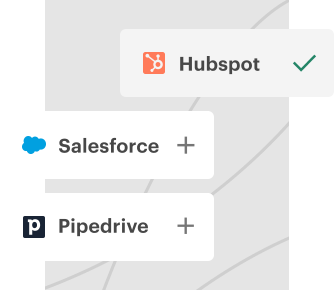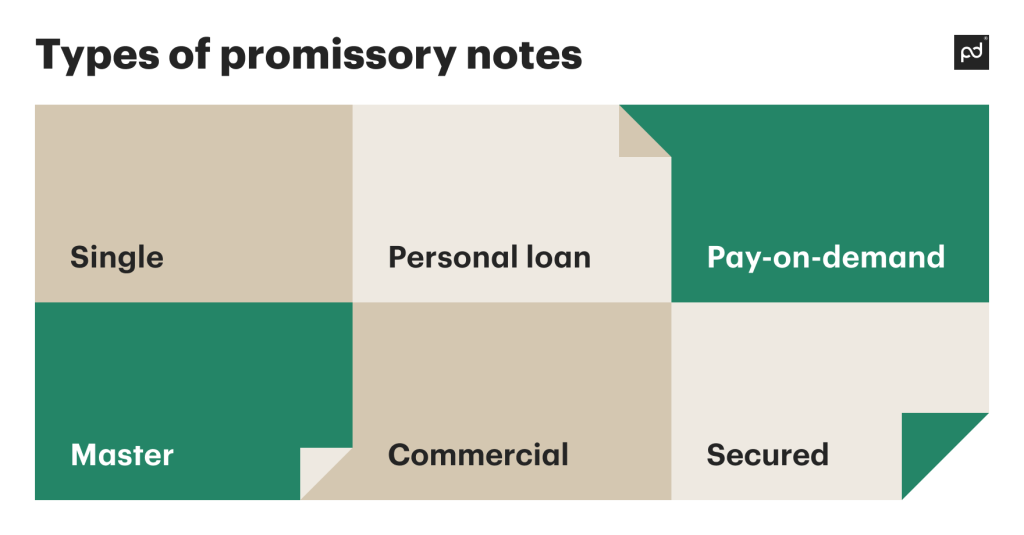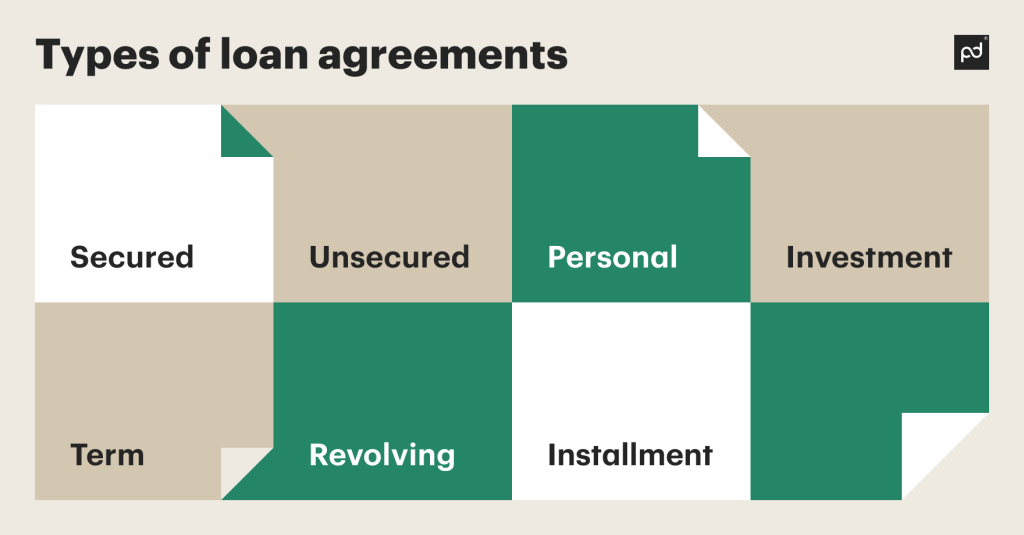
When lending or borrowing money, most people have various questions they’re unsure of the answers to.
One is “When should I use a loan agreement vs a promissory note?”
While these terms are sometimes used interchangeably, there are differences between a promissory note and a loan agreement, as they are two separate types of contracts.
In this article, we’ll explain everything you need to know to decide which is best for you.
Let’s look at a promissory note vs loan agreement in simple terms.
Firstly, what are promissory notes? A promissory note is typically used in less formal situations, e.g., when the borrower and lender have a prior relationship and trust one another.
Specifically, the purpose of a promissory note is for circumstances when smaller amounts of money are pledged.
For instance, a relative lends you money for a deposit on a car. This agreement would likely be written as a promissory note rather than a loan.
It’s important to note that promissory notes are unilateral agreements. The party receiving the money (the payee) must repay it according to the contract terms.
However, the lender or payer isn’t legally bound to loan the money in the first place.
Promissory notes specifically deal with unsecured debt.
While the agreement may set forth what happens when a payee defaults, there’s no security for the lender, and they’re likely to have difficulty seeking legal recourse for the money owed.
In contrast, a loan agreement is used for more formal situations and usually deals with large sums of money.
They’re the vehicle of choice for agreements such as mortgages and business loans and are longer and more detailed than promissory notes. As a consequence, they’re also easier to enforce.
Loan agreements are bilateral. Unlike promissory notes, both parties are legally bound to the terms and conditions of the contract and are protected under the agreement.
Regarding security, loan agreements are a form of secured debt. For example, when you buy a car or house, you put the item up as collateral against the loan.
Should you default, the payer can collect the asset and sell it to obtain the money owed.
A loan agreement and a promissory note are financial instruments dealing with money lending. They’re also legally binding.
Both state conditions for the loan and its repayment terms, including a clause stating that the borrower promises to repay the amount set out in the agreement.
Both promissory notes and loan agreements should include the following:
Create, customize and manage all your agreements in one place.

Let’s look at this in more detail.
A promissory note is a legal “promise” to repay a loan. It’s sometimes known as a note payable, payment on demand or payment on arrival.
The borrowing party promises to repay the loan according to specified terms.
A promissory note is often viewed as a legal IOU. However, strictly speaking, an IOU is a written record of a debt, not a promise to repay this by the borrower.
If you want to learn more, PandaDoc has a handy article on how to write a promissory note to talk you through this process.
Promissory notes are simple and concise legal agreements.
They’re straightforward to use and should include essential information such as:
Use our free promissory note template to make sure you don’t miss anything.
So, what’s a promissory note for? A promissory note is a clear and easy-to-understand document for informal loans.
OK, but how does a promissory note work? It is an intuitive financial instrument for laypeople when procuring or lending money.
It can be drawn up with minimal legal advice compared to a loan agreement.
A promissory note works best in circumstances where all the involved parties know and trust one another.
The following are example use cases for promissory notes:

Let’s now look at the various types of promissory notes that exist.
This is the most common type of promissory note. Also known as a primary agreement, it outlines the various terms and conditions for loan repayment.
An informal or personal promissory note contains terms and conditions to prevent disputes between friends and family.
The inclusion of an interest rate and repayment terms are not mandatory. In most cases, they depend on the relationship between the parties involved.
An informal promissory note’s terms may be more difficult to enforce than those of a loan agreement.
A pay-on-demand promissory note differs from the standard agreement type.
In it, the borrower agrees to repay the owed amount as a lump sum rather than in installments. As you might expect, the borrower can “demand” repayment anytime.
Once payment is demanded, the borrower must repay this immediately. So, this type of promissory note is best suited to smaller loan amounts.
If you’ve ever taken out a student loan, then you’re already familiar with master promissory notes (MPNs).
An MPN allows the borrower to take out multiple loans, all with the same terms and conditions outlined in the original promissory note.
This is a type of promissory note issued by banks and credit unions. Borrowers may obtain these for agreements, including auto, personal, or business loans.
Small loans are likely to be unsecured, while more considerable sums may be secured using primary loan agreements.
While not as common as the other types of promissory notes mentioned in this list, payee collateral can also be attached as a form of secured debt.
This provides greater protection for the lender.
Like any legal agreement, a promissory note has advantages and disadvantages.
Promissory note pros include:
Promissory note cons, on the other hand, include:
Now, onto loan agreements.
A loan agreement is a formal, detailed contract between a borrower and a lender. It covers the terms of the loan and its repayment.
As a multi-page agreement, it sets out conditions such as what will happen in the event of late payments or defaulting on the loan.
Loan agreements are typically secured debts. They’re commonly used for mortgages and car and business loans.
Loan agreements span multiple pages and go beyond the basics covered in a promissory note.
They’ll usually include the following:
As you can probably tell, loan agreements are much more complicated to put together than promissory notes.
With so much to cover, the last thing you want is for them to be held up waiting for individual signatures.
Fortunately, PandaDoc features electronic signature software to keep your document workflows moving.
Loan agreements are often more suitable when large sums of money are involved.
They offer more expansive protection for both parties, and debt can easily be secured against collateral.
Let’s consider an example. Say you’re loaning $25,000 to a friend to buy a car.
You’re doing this to help them as you’d like to offer them more advantageous repayment terms than a standard lender.
With a promissory note, you’d have difficulty getting anything back if your friend stopped making repayments.
With a loan agreement, on the other hand, you could legally seize the car and sell it to pay off their debts if the worst happened.

Loan agreements can be tailored to suit any circumstance. Here are some basic loan agreement categories.
As mentioned, most loan agreements are secured by collateral.
Common examples include mortgages and auto and business loans.
Going against the grain, an unsecured loan agreement has no collateral.
It’s a form of unsecured debt with limited legal remedies in case of default.
Any loan between two individuals can be drawn up as an official loan agreement.
This allows loans to family, friends, or private individuals to benefit from maximum legal protection—especially when dealing with large sums of money.
An investment loan agreement defines the terms and conditions of a loan taken out for the purpose of investing.
Typically, contract terms set forth how the funds will be used, e.g., for acquiring assets, expanding, or purchasing new equipment.
Notably, an investment loan differs from a convertible note, which is closer to an IOU (with interest) and can be paid off with equity instead of cash.
A term loan agreement is a very common loan type.
The borrower is provided with a lump sum upfront and agrees to repay this over a specified period. Interest may be fixed or variable and will affect how long the loan takes to pay off.
Unlike a term loan, a revolving loan provides a line of credit instead of cash. It offers flexible terms for repayment and borrowing additional sums.
Like a term loan, it stipulates whether interest is variable or fixed.
Revolving loan agreements are the basis for most consumer credit accounts and overdrafts.
An installment loan agreement is similar to a term loan agreement. Typically, the payee makes fixed payments until the loan is repaid.
This type of loan is attractive to borrowers as it usually garners lower fixed interest rates.
If you need help drafting a loan agreement, why not use our free loan agreement template to guide you through the process?
Like promissory notes, loan agreements also have their pros and cons.
Loan agreement cons include:
In most cases, only one of these will be necessary.
Promissory notes are more suited to smaller, informal, and unsecured lending, whereas loan agreements are better for complicated situations involving more significant sums of money.
However, occasionally, lenders and borrowers may wish to include both a promissory note and a loan agreement.
That’s because using both financial instruments can bring greater clarity to complex lending situations.
A common example is student loans.
In this instance, payees sign a multi-page loan agreement that outlines broad terms and conditions.
Additionally, a secondary master promissory note outlines simple terms for repayment and re-borrowing. This streamlines the process of funding education and its variable costs.
Set up a trial period to try PandaDoc customizable templates and legally binding signature within one platform.

Lending and borrowing money is stressful enough on its own — you don’t want to be weighed down by legalese, jurisdictions, and exorbitant legal fees on top of this.
That’s why you should use document management software from PandaDoc.
Our solution helps generate legal documents and contracts with ease and can get you up and running with loan agreements, promissory notes, and other important documents in no time.
Sign up to PandaDoc today and take the pain out of document management!
PandDoc is not a law firm, or a substitute for an attorney or law firm. This page is not intended to and does not provide legal advice. Should you have legal questions on the validity of e-signatures or digital signatures and the enforceability thereof, please consult with an attorney or law firm. Use of PandaDocs services are governed by our Terms of Use and Privacy Policy.
Keith Rabkin Chief Revenue Officer for PandaDoc
Keith has been working in technology organizations for the past 15 years and is currently the Chief Revenue Officer for PandaDoc. Prior to this, he had roles leading Growth for Adobe's Digital Media business, Gmail, YouTube, and Google Fiber.
Subscribe to get our most-popular proposal eBook and more top revenue content to help you send docs faster.